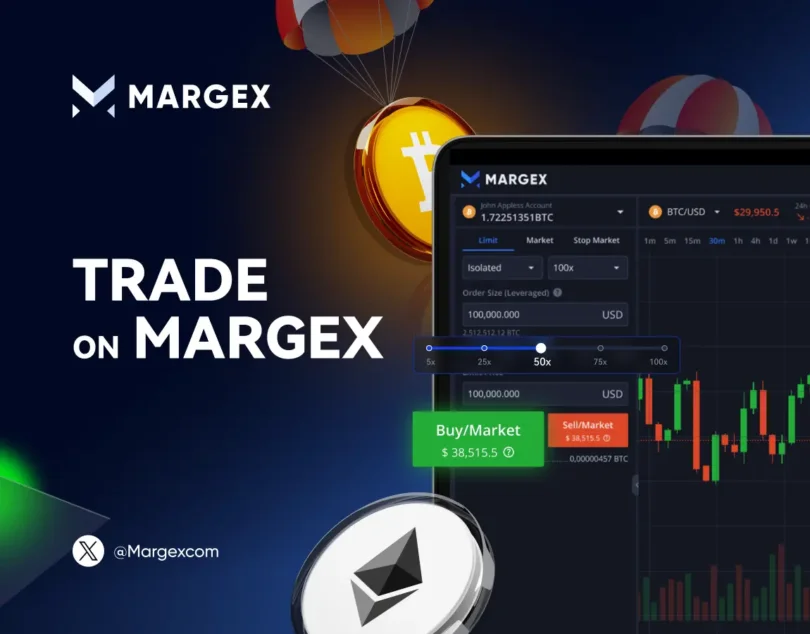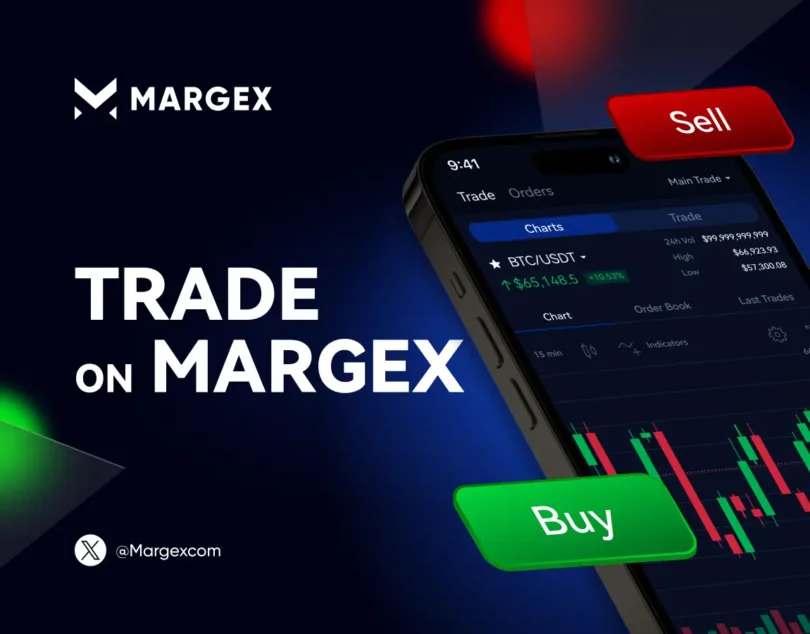Crypto Leverage Trading: What is Leverage in Crypto?

Leverage trading in crypto is a strategy where you use borrowed funds to control a larger position than your initial capital, amplifying both potential gains and losses from cryptocurrency price movements. Popular on specialized platforms, this approach can boost returns—but it also increases risk, making risk management absolutely essential for anyone trading crypto with leverage.
Key Takeaways
- Leverage trading in crypto lets you control larger positions using borrowed funds, increasing both your potential profits and risks.
- Margin is the upfront deposit required; higher leverage means less margin needed, but greater risk of rapid losses or liquidation.
- Popular cryptocurrencies for leverage trading include BTC, ETH, TRX, and USDT due to their liquidity and volatility.
- Two margin types: Cross margin uses your total balance as collateral, while isolated margin limits risk to a single trade.
- Stop-loss orders are essential for managing risk and protecting against sudden market moves.
- Choosing a trading platform requires considering security, leverage options, fees, and available assets—Margex offers up to 100x leverage and robust risk controls.
- Leverage trading is high-risk and best suited for informed traders who use strict risk management.
How Does Crypto Leverage Trading Work
Crypto leverage trading lets you open larger trades than your actual balance by using borrowed funds from the platform. This mechanism relies on three main concepts: margin, borrowed capital, and the multiplier effect.
- Margin is the amount you must deposit to open a leveraged position. It acts as a security deposit to cover potential losses. The required margin is based on your chosen leverage ratio. For example, with 10x leverage, you only need to deposit 10% of your trade’s total value.
- Multiplier effect means both profits and losses are amplified. With leverage, your exposure to price movements increases by the same multiple—so a small price change can result in much bigger gains or losses.
Example:
Suppose you use 10x leverage to open a $10,000 trade with $1,000 of your own funds.
- If the price rises by 5%, you gain $500—a 50% return on your margin.
- If the price drops by 5%, you lose $500—a 50% loss on your margin.
| Leverage | Price Change | Profit/Loss (%) | Impact Example (Initial $1,000) |
|---|---|---|---|
| 5x | +5% | +25% | +$250 gain |
| 5x | -5% | -25% | -$250 loss |
| 10x | +5% | +50% | +$500 gain |
| 10x | -5% | -50% | -$500 loss |
| 50x | +2% | +100% | +$1,000 gain |
| 50x | -2% | -100% | Liquidated |
| 100x | +1% | +100% | +$1,000 gain |
| 100x | -1% | -100% | Liquidated |
Crypto Leverage Ratios
Leverage ratios are at the core of crypto leverage trading. The ratio tells you how much bigger your trading position can be compared to your initial margin deposit. For example, a 10x leverage ratio means you can control a position ten times larger than your own capital. This is why leverage trading crypto is so attractive to both beginners and advanced traders.
Choosing your leverage level depends on your experience and goals. Many traders start with lower leverage, like 2x, for moderate exposure. Others prefer 10x to maximize returns on market swings. For those seeking the highest potential profits, Margex offers up to 100x leverage—enabling you to trade crypto with industry-leading flexibility.
Here’s how common leverage ratios compare:
| Leverage Ratio | Description | Potential Profit | Risk Level | Best For |
|---|---|---|---|---|
| 2x | moderate risk | Moderate | Low–Moderate | Beginners |
| 10x | higher market exposure | High | High | Intermediate traders |
| 100x | very volatile | Very High | Extremely High | Advanced traders |
Platforms like Margex are designed to give you a wide range of leverage options, so you can trade your way—whether you prefer conservative strategies or want to try 100x leverage for the biggest opportunities.
What Are Common Cryptocurrencies for Leverage Trading?
In leverage trading crypto, traders use borrowed funds to amplify their position sizes and potential returns. To manage this risk effectively, they typically trade well-known and highly liquid cryptocurrencies. For a leverage trading crypto example, consider how traders use assets like BTC or ETH with borrowed funds to increase both risk and potential reward. On platforms like Margex the most commonly used assets include Bitcoin (BTC), Ethereum (ETH), TRX, and Tether (USDT). These assets are favored due to their market depth, volatility, and availability in crypto leverage trading USA.
BTC
Bitcoin (BTC) is the leading asset for crypto leverage trading, offering high volatility and deep liquidity—both crucial for effective leveraged strategies. Whether you’re going long or short, BTC allows traders to take advantage of large price swings using leverage levels up to 100x on Margex. For those exploring what is leverage trading crypto, Bitcoin serves as a key starting point due to its dominance in the market and widespread support across major platforms.
ETH
Ethereum (ETH) is another core asset in leverage crypto trading USA, especially for those seeking dynamic price movement. ETH often reacts sharply to news around upgrades or DeFi activity, creating ideal conditions for leveraged plays. Traders on Margex can capitalize on these swings with flexible leverage settings. For those asking what is leverage in crypto trading, Ethereum demonstrates how smaller capital can control a much larger position, magnifying both profits and lossesXRP
TRX
TRX (Tron) has become a popular choice for leverage trading in crypto, particularly among traders in the USA. With the ability to utilize high leverage ratios, such as 5x leverage, traders can amplify their potential returns while managing their risk effectively. Leveraging allows you to control a larger position in the market without needing to trade the full amount upfront. While spot trading is typically done using actual cryptocurrencies, leverage trading allows traders to optimize their strategies through isolated margin trading and trading derivatives. Understanding the basics of trading crypto and the regulatory landscape set by the Commodity Futures Trading Commission is essential for those looking to engage in leverage trading with TRX.
Tether (USDT)
Tether (USDT) is not typically the target of speculation, but it plays a critical role in leverage crypto trading USA by acting as the base collateral for most leveraged positions. Stable and pegged to the U.S. dollar, USDT lets traders manage margin requirements and avoid price volatility in their collateral. Understanding how to utilize USDT for margin and risk control is essential for anyone diving into what is leverage trading crypto, especially when executing leveraged trades on platforms like Margex.
Leverage Trading Crypto Example
Here’s a simple example of trading crypto with leverage on Margex:
- Initial Setup:
A trader deposits $1,000 and chooses 10x leverage to trade Bitcoin (BTC). This allows control over a $10,000 position. - Opening a Position:
The trader expects BTC to rise from $30,000 to $31,000, so they open a long position, borrowing $9,000 from Margex
- Price Movement & Profit Calculation:
- If BTC rises to $31,000, the position value grows to $10,333.33 (0.3333 BTC x $31,000).
- The trader closes the position and makes a profit of $333.33, earning a 33.3% return on their $1,000 margin.
- Risk of Loss:
- If BTC falls to $29,000, the position value drops, and the trader could face a margin call or liquidation if losses exceed the margin.
- Losses are amplified just as profits are.
Takeaway:
Leverage trading in crypto lets you multiply both gains and risks—so risk management and stop-loss orders are essential for protecting your capital.
| Step | Action | Details |
|---|---|---|
| 1 | Initial Capital | $1,000 available to trade |
| 2 | Leverage Chosen | 10x leverage = $10,000 position |
| 3 | Market Movement | Price of BTC rises 5% |
| 4 | Position Value | $10,500 (5% gain on $10,000) |
| 5 | Profit | $500 gain = +50% ROI on $1,000 |
| 6 | Downside Example | 5% drop = -$500 = -50% loss |
Main Types of Margin in Crypto Leverage Trading
Crypto leverage trading platforms typically offer two main types of margin: Cross Margin and Isolated Margin.
- Cross Margin lets you use your total account balance as collateral for all open positions. This can help avoid liquidation in volatile markets by automatically sharing funds across trades, but also means your entire balance is at risk if markets move sharply against you.
- Isolated Margin allows you to allocate a fixed margin to each individual position, so only that position’s margin is affected if the trade goes wrong. This approach gives you more control over risk and is often recommended for beginners.
Choosing between cross and isolated margin depends on your trading style and risk tolerance.
What Is Leverage Trading Crypto Risk?
Leverage trading crypto can multiply both your gains and your losses. Using high leverage increases your risk, especially in volatile crypto markets, where sudden price swings can quickly lead to significant losses.
Unexpected market moves may trigger a margin call—requiring you to add funds to keep your position open—or result in liquidation, where your position is closed automatically to prevent further losses.
That’s why risk management is critical in crypto leverage trading: using leverage moderately and following a well-constructed risk management plan helps protect your capital.
Setting Stop-Loss Orders
A stop-loss order is a key risk management tool in crypto leverage trading. It automatically closes your position if the asset’s price reaches a certain level, helping you avoid bigger losses from sudden market moves.
How stop-loss orders work:
- Define your loss threshold: Decide the maximum amount you are willing to lose on a trade and set your stop-loss at that price level.
- Automatic execution: If the market hits your stop-loss level, your position closes automatically—removing emotion from the decision.
- Protection from volatility: In fast-moving crypto markets, stop-loss orders can help limit losses and give you more control.
Using stop-loss orders consistently is essential for managing risk in leveraged crypto trading. Always set your stop-loss based on your risk tolerance, market conditions, and the volatility of the asset you’re trading.
How to Choose a Crypto Leverage Trading Platform
When selecting a crypto leverage trading platform, focus on these key factors:
- Security: Ensure the platform offers robust protection for your funds and data, such as two-factor authentication (2FA), SSL encryption, and cold storage. Margex for example, implements all these measures.
- Leverage Options: Check the maximum leverage offered for different trading pairs. Margex provides up to 100x leverage, allowing both beginners and advanced traders to choose their preferred risk level.
- User Experience: A clean and intuitive interface helps you trade efficiently, analyze charts, and place orders with confidence. Margex is known for its user-friendly design.
- Fees: Review the trading fee structure to avoid unexpected costs. Margex features competitive, transparent fees with no hidden charges.
- Asset Variety: Pick a platform that supports a broad selection of cryptocurrencies. Margex lets you trade top coins like Bitcoin, Ethereum, and Litecoin, plus other popular assets.
Tip: Test the platform’s demo or support resources before depositing funds. Choose a provider that fits your trading style and risk tolerance.
Advantages of Using Margex for Leverage Trading
| Feature | Benefit |
|---|---|
| User-Friendly | Simple interface for fast trading. |
| Fair Pricing | No price manipulation or hidden fees. |
| Fast Access | No KYC needed. Start trading instantly. |
- Advanced Risk Management Tools: Margex provides traders with advanced risk management tools, such as customizable stop-loss and take-profit orders, enabling them to effectively manage risk and protect their investments. These tools are essential for implementing robust risk management strategies and minimizing potential losses.
- Fair Pricing System: Margex employs a unique price aggregation mechanism that ensures fair and accurate pricing by sourcing data from multiple liquidity providers. This system helps prevent price manipulation and ensures that traders receive competitive and transparent pricing.
- No Price Manipulation: Unlike some platforms that engage in unfair practices, Margex is committed to maintaining a fair trading environment. The platform’s anti-manipulation technology helps protect traders from market manipulation and ensures a level playing field for all users.
- Flexible Deposit and Withdrawal Options: Margex supports a variety of deposit and withdrawal methods, including cryptocurrencies and traditional payment methods. This flexibility makes it easy for traders to manage their funds and access their profits efficiently.
- Innovative Features: Margex continually updates its platform with new features and improvements to enhance the trading experience. These innovations ensure that traders have access to the latest tools and technologies, enabling them to stay competitive in the fast-paced cryptocurrency market.

FAQ
What is crypto leverage trading?
Crypto leverage trading is a strategy that uses borrowed funds to increase your exposure in the crypto market, letting you control larger positions than your actual capital. By trading crypto with leverage, you can amplify both potential gains and losses. This is typically done through crypto margin trading on specialized cryptocurrency exchanges, where traders can choose leverage levels like 2x, 10x, or even 100x.
What is the best platform for leverage crypto?
The best crypto leverage trading platform offers a wide variety of trading pairs, low trading fees, advanced risk management tools, and strong security features. Margex is a top choice for leverage trading crypto because it supports high leverage options up to 100x, transparent pricing, anti-manipulation technology, and a user-friendly interface—making it suitable for both beginners and experienced traders.
What is the best leverage for crypto trading?
The best leverage for crypto trading depends on your experience and risk appetite. For most beginners, starting with lower leverage ratios like 2x or 5x is safest, while advanced traders may use higher leverage such as 10x, 20x, or more to maximize potential returns. Always use risk management strategies when trading crypto with leverage.
What leverage is good for $100 crypto?
If you are trading crypto with $100, using a leverage ratio of 2x to 5x is generally advisable. Lower leverage reduces the risk of a margin call or liquidation, making it easier to manage your position in a volatile crypto market.
What happens if you lose a leverage trade?
If you lose a leverage trade, your losses can be amplified and may exceed your initial investment. This can trigger a margin call or cause your position to be liquidated automatically by the exchange. High leverage trading crypto increases risk, so always be aware of your liquidation price and use stop-loss orders.
Is leverage trading worth it?
Leverage trading in crypto can be worthwhile for experienced traders aiming to amplify returns, but it also comes with significant risks. Understanding how leverage works, setting appropriate risk limits, and using secure platforms like Margex are crucial for successful and safe crypto leverage trading.



